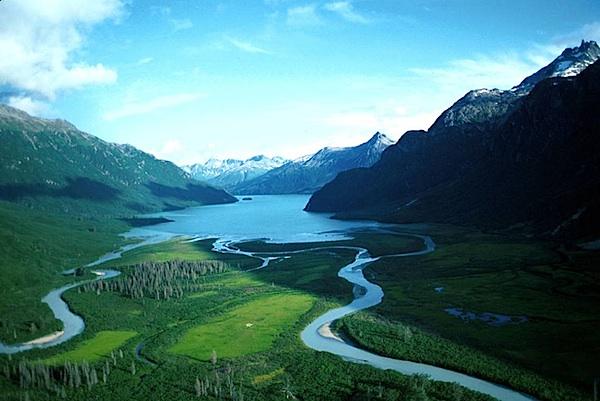
Lake Crescent, Lake Clark National Park and Preserve. NPS photo.
Thirty years after Lake Clark National Park and Preserve's initial General Management Plan was crafted, officials are working to update it with an eye on more clearly providing for visitors to the remote Alaskan park.
Of course, GMPs developed for units of the National Park System are part roadmap and park wishlist, as funding isn't always available to provide for all aspects of an approved plan. For instance, the Lake Clark GMP calls for possibly adding cabins for public use. At the same time, plan documents say whether cabins would be added would depend on a cost-benefit analysis to gauge both whether visitor demand exists for new cabins and if the park has the resources to manage the cabins.
Overall, the park staff notes that "(A)pproval of the GMP does not guarantee funding. Park operations would continue as funded and implementation of the elements in this plan would occur as additional funding becomes available. Some proposals may not be funded within the life of the plan and full implementation may be many years into the future."
Running nearly 300 pages, the Lake Clark National Park and Preserve General Management Plan Amendment / Environmental Assessment offers three alternatives:
* A "no-action" alternative that would keep the park's existing management plan, adopted in 1984, in effect.
* Alternative B, the park's preferred alternative, which calls for the additional cabins, specify more management goals for areas of the park with high visitation, and define both a "primitive backcountry zone" and a "backcountry zone" through which visitor services would either be virtually non-existent or rising to the level of cabins. The primitive backcountry zone, applied to much of the park's officially designated wilderness, aims to provide "the wildest desired conditions" in the backcountry. Far and away, the primitive backcountry zone under this alternative would cover the bulk of the park -- 70 percent, or roughly 2.6 million acres.
This alternative also envisions the possible designation of campsites in areas outside of primitive wilderness, "provide a public bear-resistant privy and day-use storage facility at Silver Salmon Creek, (and) explore possible future sites for bear-proof storage and human waste management."
Alternative B also would allow for additional commercial services "aimed at improving visitor access and expanding the range of recreation opportunities for visitors who are recreating in a predominantly natural setting." These services could include non-motorized boat rentals on Kontrashibuna Lake as well as guided "non-motorized recreational activities."
Alternative B proposes 3-8 cabins for public use ("The Joe Thompson, Priest Rock, aka Allen Woodward, and Snipe Lake cabins would be three of the eight possible public use cabins), and calls for an additional three full-time positions, which would bring the park's full-time staff to 29 at an extra cost of $413,000.
If this alternative is selected, the park's annual operating budget is estimated to rise to $4,030,000, whereas it would stand at $3,458,000 under the no-action alternative.
* Alternative C would boost the amount of "primitive backcountry," to 2.8 million acres, not provide for any public-use cabins, and maintain the current level of "access, visitor use, and infrastructure."
No additional commercial services would be provided.
Comments are being taken on the draft through March 26. You can find the entire document, and a place to comment, on this site.
Traveler footnote: Lake Clark was brought into the National Park System in 1980 under the Alaska National Interest Lands Conservation Act, though it already had fame with wllderness advocates thanks to Dick Proenneke, who discovered the area in the 1960s when he headed to Upper Twin Lake and, with his own hands, built a cabin that still stands today as an historic structure.
Proenneke's self-reliance long has served as a symbol of the romanticism that seems to swirl in the minds of those who dream of living self-sufficient in North America's wilds.
More recently, the park has gained attention for the Mount Redoubt Volcano, which continues to erupt from time to time, although it's been relatively quiet since a spate of activity in March 2009.



Add comment